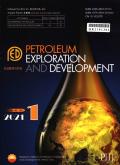Controlling effects of the Mid-Permian multistage slope-break zones on paleogeomorphology and large-scale shoals in the Sichuan Basin, SW China
IF 8
Q1 ENERGY & FUELS
引用次数: 0
Abstract
This study reconstructed the paleo-uplift and depression pattern within the sequence stratigraphic framework of the Mid-Permian Maokou Formation, Sichuan Basin, investigated its tectono-sedimentary mechanisms and its control on paleogeomorphology and large-sale shoals based on analysis of outcrops, loggings and seismic data. The results show that the Maokou Formation comprises two third-order sequences, six fourth-order sequences (SSQ1–SSQ6), and four distinct slope-break zones developing progressively from north to south. Slope-break zones I–III in the northern basin, controlled by synsedimentary extensional faults, exhibited a NE-trending linear distribution with gradual southeastward migration. In contrast, slope-break zone IV in the southern basin displayed an arcuate distribution along the Emeishan Large Igneous Province (ELIP). The evolutions of these multistage slope-break zones governed the Mid-Permian paleogeomorphy in the Sichuan Basin transformations from a giant, north-dipping gentle slope (higher in the southwest than in the northeast) in the early-stage (SSQ1–SSQ2) to a platform (south)-basin (north) pattern in the middle-stage (SSQ3–SSQ5). Ultimately, a further depression zone developed in the southwestern basin during the late-stage (SSQ6), forming a paleo-uplift bounded by two depressions. The developments of the Mid-Permian paleogeomorphic configuration reflected the combined control by the rapid subduction of the Mianlüe Ocean and the episodic eruptions of the Emeishan mantle plume (or hot spots), which jointly facilitated the formation of extensive high-energy shoal facies belts along slope-break zones and around paleo-volcanic uplifts.
四川盆地中二叠世多期坡折带对古地貌和大尺度浅滩的控制作用
通过对露头、测井和地震资料的分析,重建了四川盆地中二叠统茅口组层序地层格架内的古隆起-坳陷格局,探讨了其构造-沉积机制及其对古地貌和大型浅滩的控制作用。结果表明,茅口组由2个三级层序、6个四级层序(ssq1 ~ ssq6)和4个自北向南逐渐发育的明显坡折带组成。盆地北部1 ~ 3期坡折带受同沉积伸展断裂控制,呈北东向线状分布,并逐渐向东南方向迁移。盆地南部第四坡折带沿峨眉山大火成岩省呈弧形分布。这些多期坡折带的演化控制了四川盆地中二叠世古地貌由早期(SSQ1-SSQ2)的巨型北倾缓坡(西南比东北高)向中期(SSQ3-SSQ5)的地台(南)-盆地(北)格局转变。最终,盆地西南部在后期(SSQ6)进一步发育了一个坳陷带,形成了以两个坳陷为界的古隆起。中二叠世古地貌形态的发育反映了勉海的快速俯冲和峨眉山地幔柱(或热点)的幕式喷发的共同控制,它们共同促进了沿坡折带和古火山隆起周围广泛的高能滩相带的形成。
本文章由计算机程序翻译,如有差异,请以英文原文为准。
求助全文
约1分钟内获得全文
求助全文

 求助内容:
求助内容: 应助结果提醒方式:
应助结果提醒方式:


